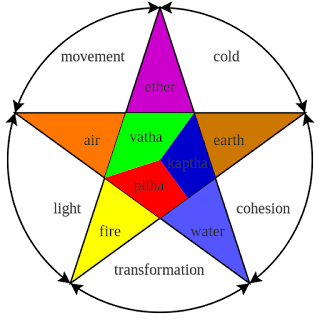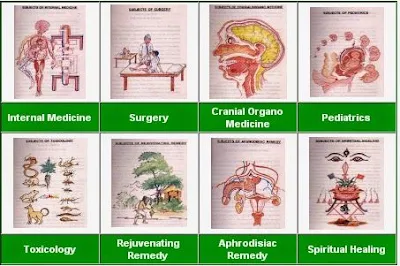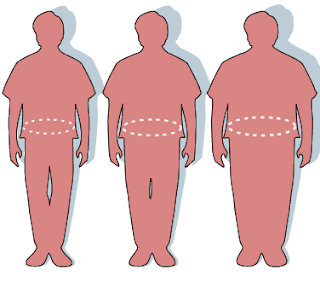Ayurveda is an ancient medical science and to discovery of Aurveda all credit goes to India.The word, Ayurveda is composed of two words of Sanskrit:- Ayur (meaning life) and Veda (meaning knowledge). Ayurveda is a medical science of ancient India. It deals with matters relating to health, day-to-day life and longevity (long life).
Ayurveda is a traditional system of medicine and medication, based on experience and observation. This system of medicine and medication is more than 3000 years old.
According to mythological story, Dhanvantari was the first physician to use ayurveda. In modern India also, Ayurveda is being used. It has also reached outside India in countries like the UAE and all other countries also take advantage of ayurveda.
Ayurveda is based on many old and scarce texts. The oldest known ayurvedic texts are the Susrut-Sanhita and the Charak-Sanhita.
Types of Diagnosis In Ayurveda:
Ayurveda has eight types or method of diagnosis. They are:-
Important thing is that the Ayurveda based on some principles and they are:-
Tridhosh or these three elements are composed by the five elements (space, air, fire, water, earth). They are works for maintain the health of body and these three fundamental bodily humours or doshas called Vata, Pitta and Kapha. This theory is also known as prakriti or prakruti, by this theory we have to understand about prakruti of all people. Like that vata is also known as vayu or movements and Vata prakriti people nature is cool and calm, so vata equals to cold nature. Second is Pitta, this is hot, warm and anger. So Pitta is warm in nature. And last is Kapha, it is down to earth and combination of both water and earth. So Kapha is calm and rough in nature.
Eight Components (Ashthanga) of Ayurveda:
Mainly the Ayurveda was science of the eight component and the eight components of Ayurveda are:
In Ayurveda methodology everything is composed by these five elements and body is also made by these elements. They are called as Pancha Mahabhoot.
The Five elements of Ayurveda are:-
Saptadhatu is the base of our body structure and the seven dhatus are works for maintain our body cells and tissue level.
These seven tissues are:-
Ayurveda is a traditional system of medicine and medication, based on experience and observation. This system of medicine and medication is more than 3000 years old.
According to mythological story, Dhanvantari was the first physician to use ayurveda. In modern India also, Ayurveda is being used. It has also reached outside India in countries like the UAE and all other countries also take advantage of ayurveda.
Ayurveda is based on many old and scarce texts. The oldest known ayurvedic texts are the Susrut-Sanhita and the Charak-Sanhita.
Types of Diagnosis In Ayurveda:
Ayurveda has eight types or method of diagnosis. They are:-
- Pulse – Nadi Vigyan
- Urine – Mutra Vigyan
- Stool or latrine – Mala Vigyan
- Tongue – Jivha Vigyan
- Speech – Shabda Vigyan
- Touch – Saparsha Vigyan
- Vision – Drik or Drishti Vigyan
- Shape, figure and structure – Aakriti Vigyan, are the most types of diagnosis in ayurveda.
Important thing is that the Ayurveda based on some principles and they are:-
- Tridosha Theory or Three Bodily Humors (Vata, Pitta and Kapha)
- PanchMahabhoota Theory or Five Elements (Space, Air, Water, Fire, Earth)
- Ashataang Theory or Eight Components
- Saptdhatu Theory or Seven Tissues of Body
- Pathya and Kupathya Theory or Dietary and Indulgence.
Tridhosh or these three elements are composed by the five elements (space, air, fire, water, earth). They are works for maintain the health of body and these three fundamental bodily humours or doshas called Vata, Pitta and Kapha. This theory is also known as prakriti or prakruti, by this theory we have to understand about prakruti of all people. Like that vata is also known as vayu or movements and Vata prakriti people nature is cool and calm, so vata equals to cold nature. Second is Pitta, this is hot, warm and anger. So Pitta is warm in nature. And last is Kapha, it is down to earth and combination of both water and earth. So Kapha is calm and rough in nature.
Eight Components (Ashthanga) of Ayurveda:
- General Medicine: - Kayachikitsa Tantra (Treatment of diseases affecting the body)
- Ophthalmology or ENT: - Shalakya Tantra (Treatments of diseases belonging from eye and ear)
- Surgery: - Shalya Tantra (It is a process to removal of any object that entered into the body and became a problem as disease. Also it's used to removal of any useless part of body)
- Elixirs: - Rasaayan Tantra (It is based on Rasaayan Shastra)
- Pediatrics: - Kaumarbhritya Tantra (Cure of children's diseases)
- Exorcism or Psychiatry: - Bhuta Vidya (treatment of mental and psychological diseases.)
- Toxicology: - Agada Tantra (Known as antidote principle)
- Aphrodisiacs: - Vajikarana Tantra
In Ayurveda methodology everything is composed by these five elements and body is also made by these elements. They are called as Pancha Mahabhoot.
The Five elements of Ayurveda are:-
- Space or Ether – Aakash
- Air or Wind – Vayu
- Water – Jal
- Earth – Prithavi
- Fire – Teja
Saptadhatu is the base of our body structure and the seven dhatus are works for maintain our body cells and tissue level.
These seven tissues are:-
- Rasa – Plasma tissue (for digestive system)
- Rakta – Blood (Blood circulation)
- Mamsa – Muscle (Muscular structure)
- Meda – Adipose tissue, fat
- Asthi – Bone and cartilage (Skeleton of body structure )
- Majja – Marrow, Nerve
- Shukra / Artava – Semen Fluid (Reproductive system)










Hi arvind ,
ReplyDeleteI want to know the ayurvedic treatment for solar es is
hello sir do u have any home remedies to gain weight
ReplyDeleteSi, How do I know nature of my body
ReplyDeleteYou can read the article is base on - Tridosh theory in Ayurveda.
Delete